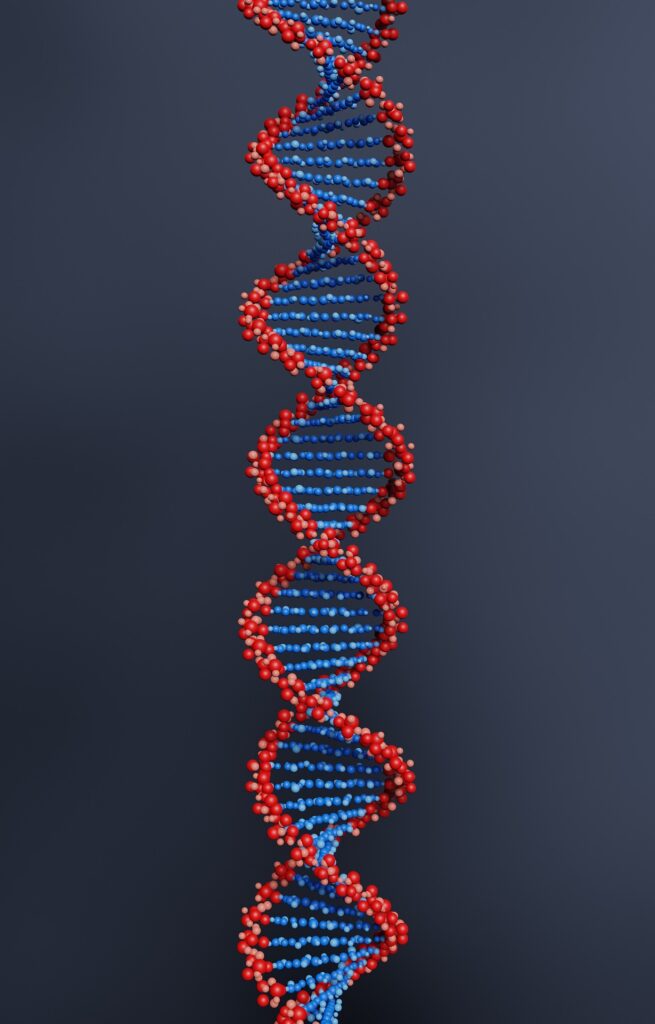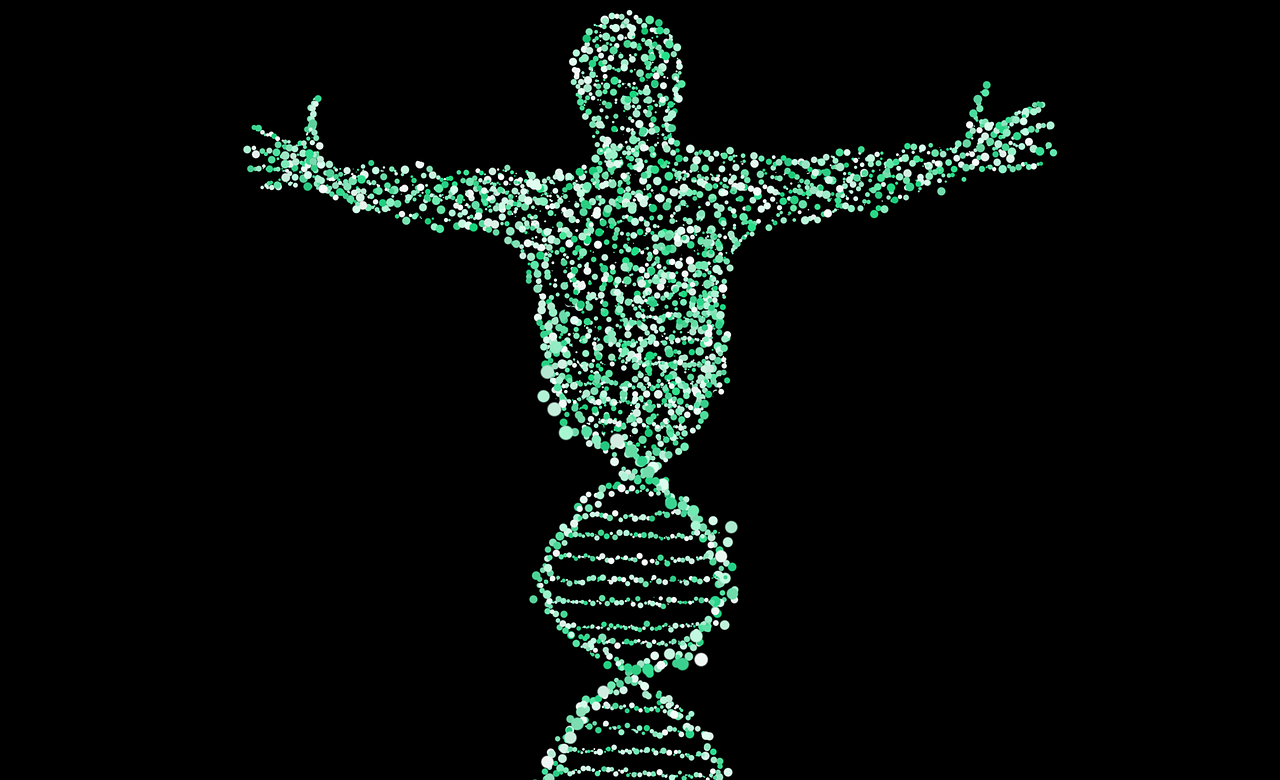The Human Genome Project (HGP) was an international scientific research initiative aimed at mapping and sequencing the entire human genome, the complete set of DNA within a human cell. Launched in 1990 and Completed in 2003, it provided the first full blueprint of human DNA, revolutionizing biology, medicine, and biotechnology, the HGP was a collaborative effort involving researchers from the United States, United Kingdom, France, Germany, Japan, China, and other countries. The project was primarily funded by the U.S. National Institutes of Health (NIH) and the Department of Energy (DOE), with significant contributions from the Welcome Trust in the UK and other global partners.
Sequencing the genome means determining the exact order of the bases (A, T, C, G) along the DNA. Early HGP scientists used the Sanger method – a laboratory technique (later automated) that “reads” DNA one piece at a time ( genome.gov. ) By improving these methods and building powerful computers to assemble the data, they eventually decoded most of the human sequence. (For scale: the first draft cost about $3 billion and took over a decade; now a complete human genome can be sequenced in hours at a cost of only a few hundred dollars ( biology.mit.edu.) The result was a reference “blueprint” of human DNA, freely shared in public databases.
Key Facts:
- Duration: 1990–2003
- Cost: ~3billion(now reduced to 600 per genome)
- Goal: Identify all ~20,000-25,000 genes in human DNA
- Collaborators: NIH (USA), Wellcome Trust (UK), and global labs
Goals of the HGP

When it began in 1990, the HGP set out ambitious goals
- Sequence the Human Genome: Determine the order of the approximately 3 billion base pairs (adenine, thymine, cytosine, and guanine) that make up human DNA.
- Map Genes: Identify the estimated 20,000–25,000 genes in the human genome and their locations.
- Develop Tools and Technologies: Create faster, more cost-effective sequencing technologies and computational tools for genomic analysis.Invent faster, cheaper DNA sequencing methods and data analysis tools.
- Store and Share Data: Make genomic data publicly accessible through databases like GenBank and Ensembl. Release all data openly in public databases (no patents on raw sequences)
- Address Ethical, Legal, and Social Issues (ELSI): Explore the societal implications of genomic research, including privacy, discrimination, and equitable access to genetic technologies.
- Model organisms: Also sequence key genomes of other species (e.g. E. coli, yeast, fruit fly, nematode, mouse) to help interpret human genes
These goals were internationally coordinated. The U.S. (NIH and Dept. of Energy) worked with partners in Britain, France, Germany, China and elsewhere (genome.gov.) Francis Collins (then NIH) led the US effort; James Watson (of DNA fame) was first NIH director. The HGP “was a landmark global scientific effort whose signature goal was to generate the first sequence of the human genome” (genome.gov.) By leveraging teamwork and open data, it aimed to “usher in a new era for biomedical research”.
Major Milestones:
1990 – Project launch.
In October 1990, the US officially funded the HGP with a 5-year plan.Genetic maps of each chromosome (essentially red/green-dot atlases) were created to guide sequencing.
1995–1998 – Pilot projects and maps.
Early work completed bacterial and yeast genomes. A new private company (Celera Genomics, led by Craig Venter) joined in 1998, using a faster “whole genome shotgun” strategy.
2000 – Draft announcement.
On June 26, 2000, U.S. President Clinton and other leaders announced a working draft of the human genome. This draft covered ~90% of the genome, with gaps and errors still to fill.
2001 – First publications.
In February 2001, an international consortium published the first draft sequence and analysis in Nature. The initial analysis found about 35,000 genes (later revised downward) and confirmed that any two people share 99.9% of their DNA.
2003 – HGP complete.
On April 14, 2003 (ahead of schedule), HGP announced successful completion. In practical terms this meant ~90–95% of the genome had been finished to high accuracy (with remaining gaps filled in soon after). The final comprehensive sequence was published in 2004.
2004+ – Post-HGP projects.
After HGP, follow-up projects mapped human variation. The International HapMap (around 2002–2005) catalogued ~1 million common DNA variants.The 1000 Genomes Project (2008–2015) sequenced thousands of people to find rarer variants. Together these efforts, along with large biobanks (like the US “All of Us” program), continue to build on HGP’s legacy, linking genetic differences to traits and diseases.
we also divide as Pre-HGP Era (1950s-1980s)
- 1953: Watson & Crick discover DNA’s double helix structure
- 1977: Frederick Sanger develops first DNA sequencing method
- 1984: First discussions about sequencing the human genome at Alta Conference
- 1988: National Research Council recommends a coordinated genome project
and main Project Timeline:
| Year | Milestone |
|---|---|
| 1990 | Official project launch (NIH & DOE) |
| 1996 | First eukaryotic genome (yeast) sequenced |
| 1998 | Celera Genomics enters private sector race |
| 2001 | Draft sequences published (Nature & Science) |
| 2003 | High-quality “complete” sequence achieved |
| 2022 | First truly complete T2T (telomere-to-telomere) sequence |
Scientific Methodology and Technological Breakthroughs
A. Sequencing Technologies
- First Generation (Sanger Sequencing):
- Capillary electrophoresis-based
- Accuracy: 99.99%
- Throughput: ~1,000 bases per run
- Cost: $0.50/base (1990)
- Shotgun Sequencing Approach:
- DNA fragmented into small pieces
- Each piece sequenced separately
- Computational assembly using overlap-layout-consensus algorithms
- Next-Generation Sequencing (Post-HGP):
- Illumina (sequencing by synthesis)
- PacBio (long-read sequencing)
- Oxford Nanopore (real-time sequencing)
B. Computational Challenges
- Required development of novel algorithms for:
- Sequence assembly
- Gene prediction
- Variant calling
- Major software tools developed:
- BLAST (sequence alignment)
- Phred/Phrap (base calling)
- Ensembl (genome annotation)
Key Achievements
The Human Genome Project had many landmark outcomes:
- Complete sequence:
- The first near-complete human DNA sequence was delivered, revealing ~3 billion base pairs. This included essentially all protein-coding genes and much of the non-coding DNA.
- Gene count:
- It showed that humans have far fewer genes than expected. Estimates of ~100,000 genes fell to about 20,000–25,000. (For context, simpler organisms like rice or worms have similar numbers of genes.) This revealed how complex biology arises from modest genetic “parts.”
- Genetic variation:
- The project confirmed that any two human genomes are >99% identical. Only ~0.1% difference (about 3 million single-base variants) accounts for most genetic diversity. This insight helped direct later studies to focus on these variants.
- Disease genes:
- By providing the sequence and maps, HGP accelerated disease-gene discovery. For example, fewer than 10 human disease genes were known in 1990, but by 1997 positional cloning (using the maps) had found over 100 genome.gov. In the years since, thousands of genes linked to inherited diseases (like cystic fibrosis, diabetes, heart conditions, neurological disorders, etc.) have been identified, aided by the human reference genome.
- New technologies:
- The HGP drove dramatic tech advances. Sequencing speed and cost improved by orders of magnitude. Where the first draft took 10+ years and ~$3B, modern “next-generation” sequencers can read a genome in hours for a few hundred dollars biology.mit.edu. This revolution has made DNA sequencing routine in research and (in limited cases) medicine.
- Data sharing and collaboration:
- HGP established a culture of open data. By agreement, all sequence data were deposited in public databases (like GenBank) in real time genome.gov. This principle (often called the “Bermuda Principles” outside the U.S.) ensured researchers worldwide could immediately use the information. It also spawned new “team science” models and international collaborations biology.mit.edu.
- Catalyst for Further Research:
- The HGP laid the foundation for subsequent projects like the HapMap Project (mapping genetic variations) and the 1000 Genomes Project (cataloging human genetic diversity).
Impact on Medicine and Health
The HGP’s knowledge of the human DNA code has transformed biomedical research and started to change healthcare:
- Genetic testing and diagnosis:
- Discovering gene-disease links means many inherited conditions can now be tested at the DNA level. For example, mutations in the BRCA1 and BRCA2 genes greatly increase breast/ovarian cancer risk, and tests for these genes guide preventive care. Genetic tests for familial colon cancer, muscular dystrophy, metabolic disorders, and thousands of other conditions are now available. As C&E News notes, predictive genetic tests (e.g. for cancer risk) were already in use for conditions like breast and colon cancergenome.gov. These tests allow high-risk individuals to take early action (enhanced screenings, lifestyle changes, or preventive treatment).
- Personalized (precision) medicine:
- The HGP laid the groundwork for tailoring treatments to a patient’s genetics. For example, in pharmacogenomics doctors adjust drug choice or dose based on a person’s DNA (since variants affect drug metabolism). The term “personalized medicine” refers to using genetic (and other molecular) profiles to guide therapy. Some cancer treatments already follow this model. For instance, tumor DNA sequencing can reveal mutations that make a patient eligible for targeted drugs or immunotherapy. One success story is imatinib (Gleevec), a drug designed specifically to block the BCR-ABL fusion protein that drives chronic myelogenous leukemia. Imatinib was developed once the HGP-era mapping identified the BCR and ABL genes; it produced dramatic remissions in CML patientsgenome.gov.
- Drug development:
- Pharmaceutical companies now mine genomic data for drug targets. Because HGP and follow-up projects have mapped thousands of genes and pathways, researchers can identify proteins that might be blocked or activated by new medicines. Genomics also aids “biomarker” development, where a genetic signature indicates who will benefit from a drug. In general, the industry anticipates that most new drugs will come from this genomic knowledgegenome.gov.
- Gene therapy and editing:
- By showing which gene mutations cause disease, the HGP also guides efforts to fix genes. In gene therapy, a healthy copy of a gene is delivered (often via a harmless virus) to patients. Clinical trials and some approved therapies now treat formerly incurable diseases. For example, Luxturna (approved 2017) delivers a normal RPE65 gene to the eye to restore vision in certain inherited blindness. Zolgensma (approved 2019) uses a viral vector to add the SMN1 gene in infants with spinal muscular atrophy, dramatically improving muscle functioncen.acs.org. Each of these was only possible because the specific disease genes were known from genomic research. (Research is also underway on CRISPR-based gene editing, where the genome itself is cut and corrected in situ. CRISPR therapies are in trials for conditions like sickle cell disease.)
- Preventive and population health:
- Knowledge from HGP is beginning to enter public health. For example, experts debate whether newborns should have their genomes sequenced at birth to predict future disease risksbiology.mit.edu. Pilot programs exist in the US and UK to test the benefits and challenges of early sequencing. More broadly, large-scale genomic screening (tied to electronic health records) may identify people at risk for conditions like heart disease or diabetes, allowing early interventions (lifestyle changes, medications or screening). In cancer, identifying inherited risk (BRCA genes, Lynch syndrome genes, etc.) can trigger preventive surgery or frequent surveillance.
- Cancer genomics:
- Sequencing efforts have extended to cancer genomes. By sequencing tumors from many patients, researchers have catalogued common mutations across cancers. This has led to numerous targeted therapies (based on mutant proteins) and better understanding of cancer biology. Ongoing projects continually sequence tumors to match patients with personalized treatments (often immunotherapy or targeted kinase inhibitors) based on their tumor’s unique mutations.
The HGP has transformed biology, medicine, and biotechnology by providing a reference genome that serves as a blueprint for understanding human biology. Key impacts that :
1. Disease Research and Diagnosis
- Genetic Basis of Diseases: The HGP identified genes associated with diseases like cystic fibrosis, Huntington’s disease, and various cancers, enabling earlier diagnosis and targeted therapies.
- Pharmacogenomics: Understanding genetic variations allows for personalized medicine, tailoring drug treatments to an individual’s genetic profile to improve efficacy and reduce side effects.
- Rare Diseases: Genomic data has helped diagnose and develop treatments for rare genetic disorders, many of which were previously untreatable.
2. Advancements in Biotechnology
- CRISPR and Gene Editing: The HGP’s data facilitated the development of precise gene-editing tools like CRISPR-Cas9, which allows scientists to modify DNA to correct mutations or study gene functions.
- Synthetic Biology: Genomic knowledge has enabled the creation of synthetic organisms and gene circuits for applications in medicine, agriculture, and industry.
3. Population Genetics and Ancestry
- The HGP and subsequent projects have illuminated human migration patterns, genetic diversity, and evolutionary history, fueling direct-to-consumer genetic testing services like 23andMe and Ancestry DNA.
Ethical, Legal, and Social Implications (ELSI)
The HGP’s ELSI program addressed critical concerns, including:

- Privacy and consent:
- A person’s genome contains sensitive personal information (health risks, ancestry, etc.). Protecting individuals’ privacy and securing data became a major focus. Researchers developed guidelines for informed consent, data security, and who can access genomic databases.
- Genetic discrimination:
- There was concern that insurers or employers might misuse genetic data. In response, laws were passed in many countries. In the US, the Genetic Information Non discrimination Act (GINA 2008) in the U.S . prohibits health insurers and employers from discriminating based on a person’s genes
- Intellectual property:
- The question of patenting genes arose during and after HGP. Some companies had patented isolated human genes. In 2013, the U.S. Supreme Court ruled that naturally occurring DNA sequences cannot be patented.ensuring that all of the human genome remains in the public domain. Synthetic DNA (cDNA) can be patented, but raw gene sequences cannot.
- Equity and access:
- Concerns persist about ensuring all groups benefit from genomic advances. The HGP highlighted the need for diverse participation, and many programs now include underrepresented populations. There are also worries about “designer babies” and gene editing: while editing embryos to enhance traits is illegal or banned in most countries, the advent of CRISPR has renewed ethical debate about germline modifications.
- Social implications:
- More broadly, genomics raises questions about identity and responsibility. For example, understanding that many traits have genetic components should not lead to genetic determinism or stigma.
Future Aspects of Genomic Research in Human Life
The HGP was a starting point, and its legacy continues to shape the future of human health, technology, and society. Below are key areas where genomic research is expected to have a transformative impact:
1. Precision Medicine
- Tailored Therapies: Advances in genomic profiling will enable treatments customized to an individual’s genetic makeup, improving outcomes for diseases like cancer, Alzheimer’s, and cardiovascular disorders.
- Predictive Medicine: Genetic screening could identify disease risks decades in advance, allowing preventive measures to delay or avoid conditions like diabetes or heart disease.
- Polygenic Risk Scores: Combining data on multiple genetic variants will improve predictions of complex disease risks, such as obesity or schizophrenia.
Cancer Genomics:
- Discovered driver mutations in:
- BRCA1/BRCA2 (breast cancer)
- TP53 (multiple cancers)
- EGFR (lung cancer)
Rare Genetic Disorders:
- Identified causative mutations for:
- Cystic fibrosis (CFTR gene)
- Huntington’s disease (HTT gene)
- Sickle cell anemia (HBB gene)
Pharmacogenomics:
- Warfarin dosing (CYP2C9/VKORC1 variants)
- Abacavir hypersensitivity (HLA-B*57:01)
- Clopidogrel metabolism (CYP2C19)
2. Gene Therapy and Editing
- Curing Genetic Diseases: Gene therapies, such as those for sickle cell anemia and spinal muscular atrophy, are already in use. Future therapies will target a broader range of conditions, including hemophilia and muscular dystrophy.
- CRISPR Advancements: Next-generation CRISPR tools will offer greater precision and safety, potentially correcting mutations in vivo (within the body) without affecting future generations.
- Ethical Regulation: Global frameworks will be needed to regulate germline editing (changes passed to offspring), balancing therapeutic benefits with risks of unintended consequences.
3. Synthetic Biology and Bioengineering
- Designer Organisms: Genomic knowledge will enable the creation of microorganisms engineered to produce biofuels, pharmaceuticals, or biodegradable materials.
- Organoids and Tissue Engineering: Stem cells guided by genomic data will produce lab-grown organs for transplantation, reducing reliance on donor organs.
- Human Augmentation: Future applications may involve enhancing traits like immunity, longevity, or cognitive ability, raising ethical questions about equity and human identity.
4. Public Health and Global Health Equity
- Genomic Surveillance: Real-time genomic sequencing of pathogens, as seen during the COVID-19 pandemic, will improve outbreak detection and vaccine development.
- Global Genomic Diversity: Expanding genomic databases to include underrepresented populations will ensure that medical advancements benefit all ethnic groups, reducing health disparities.
- Affordable Sequencing: As sequencing costs drop (from $3 billion for the HGP to ~$600 today), low-resource settings will gain access to genomic tools for diagnosing and treating diseases.
5. Artificial Intelligence and Big Data in Genomics
- AI-Driven Analysis: Machine learning will accelerate the interpretation of vast genomic datasets, identifying patterns and predicting outcomes for complex diseases.
- Integration with Other Omics: Combining genomics with proteomics, metabolomics, and epigenomics will provide a holistic view of biological systems, enhancing drug discovery and diagnostics.
- Wearable Genomics: Future devices may monitor real-time genetic and epigenetic changes, providing personalized health recommendations.
6. Longevity and Aging
- Aging Research: Genomic studies of centenarians and model organisms are uncovering genes linked to longevity, paving the way for interventions to extend healthy lifespans.
- Senolytics and Epigenetic Reprogramming: Therapies targeting senescent cells or resetting epigenetic markers could delay age-related diseases like dementia or arthritis.
7. Ethical and Societal Evolution
- Public Engagement: Educating communities about genomics will foster informed decision-making and reduce stigma around genetic conditions.
- Global Governance: International collaboration will be crucial to establish ethical standards for gene editing, data sharing, and equitable access to genomic technologies.
- Cultural Impacts: Genomic discoveries may reshape notions of identity, kinship, and heritage, influencing social norms and policies.
Ongoing & Future Genome Projects
| Project | Goal | Progress |
|---|---|---|
| All of Us (NIH) | Sequence 1M diverse genomes | 500K+ completed (2024) |
| UK Biobank | Link genomics to health records | 500K genomes sequenced |
| Earth BioGenome | Sequence all eukaryotic life | 3,000+ species done |
| Cancer Genome Atlas | Map all cancer mutations | 33 cancer types profiled |
Sequencing Cost Reduction
| Year | Cost per Genome | Technology |
|---|---|---|
| 2001 | $100 million | Sanger |
| 2008 | $1 million | NGS |
| 2015 | $1,000 | HiSeq X |
| 2023 | $600 | NovaSeq |
Challenges and Considerations
- Data Security: Protecting genomic databases from breaches or misuse remains a priority, as genetic data is uniquely identifiable and permanent.
- Misinterpretation Risks: Public misunderstanding of genetic test results could lead to unnecessary anxiety or inappropriate medical decisions.
- Commercialization: Balancing profit motives in the genomics industry with public health interests will require robust regulation.
- Unintended Consequences: Gene editing and synthetic biology carry risks of ecological imbalances or off-target effects, necessitating rigorous safety protocols.
The Human Genome Project was a monumental achievement that unlocked the code of human life, catalyzing advancements in medicine, biotechnology, and anthropology. Its legacy continues through ongoing research and applications that promise to revolutionize human health and society. However, realizing the full potential of genomics requires addressing ethical, technical, and societal challenges to ensure equitable and responsible use of this powerful knowledge. As sequencing technologies, AI, and gene-editing tools evolve, the future of genomics holds immense potential to enhance human well-being, extend lifespans, and deepen our understanding of what it means to be human. . In summary, the Human Genome Project provided the fundamental map of human DNA . (genome.govgenome.gov.) Its achievements have accelerated biology and medicine, enabling personalized diagnostics, new drugs, and gene therapies. It also set new standards for data sharing and ethics. Looking ahead, genome research promises to further transform healthcare: empowering preventive medicine, illuminating disease mechanisms, and offering ever more precise ways to treat and avoid illness.
Recommended Reading:
1. The Gene: An Intimate History – Siddhartha Mukherjee
📖 Description: Pulitzer Prize-winning exploration of genetics from Mendel to CRISPR
🔗 Amazon US: https://www.amazon.com/Gene-Intimate-History-Siddhartha-Mukherjee/dp/1476733503
🔗 Amazon India: https://www.amazon.in/Gene-Intimate-History-Siddhartha-Mukherjee/dp/9386057618
🔗 Flipkart: https://www.flipkart.com/the-gene/p/itmfc9jxscfcdhjs
2. The Genome Odyssey: Medical Mysteries and the Incredible Quest to Solve Them – Euan Ashley
📖 Description: Stanford geneticist’s account of real-world genomic medicine breakthroughs
🔗 Amazon US: https://www.amazon.com/Genome-Odyssey-Medical-Incredible-Solve/dp/1250274439
🔗 Amazon India: https://www.amazon.in/Genome-Odyssey-Medical-Mysteries-Incredible/dp/1250274439
3. The Code Breaker: Jennifer Doudna, Gene Editing, and the Future of the Human Race – Walter Isaacson
📖 Description: Biography of CRISPR pioneer Jennifer Doudna
🔗 Amazon US: https://www.amazon.com/Code-Breaker-Jennifer-Doudna-Editing/dp/1982115858
🔗 Amazon India: https://www.amazon.in/Code-Breaker-Jennifer-Editing-Future/dp/1982115858
4. Genome: The Autobiography of a Species in 23 Chapters – Matt Ridley
📖 Description: Classic introduction to human genetics
🔗 Amazon US: https://www.amazon.com/Genome-Autobiography-Species-23-Chapters/dp/0060894083
🔗 Amazon India: https://www.amazon.in/Genome-Autobiography-Species-23-Chapters/dp/8172236099
5. She Has Her Mother’s Laugh: The Powers, Perversions, and Potential of Heredity – Carl Zimmer
Description: Modern examination of inheritance concepts
🔗 Amazon US: https://www.amazon.com/She-Has-Her-Mothers-Laugh/dp/1101984597
🔗 Amazon India: https://www.amazon.in/She-Has-Her-Mothers-Laugh/dp/1101984597















